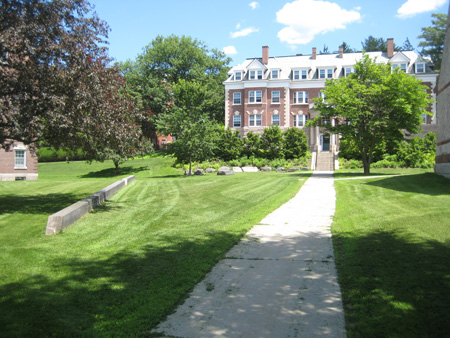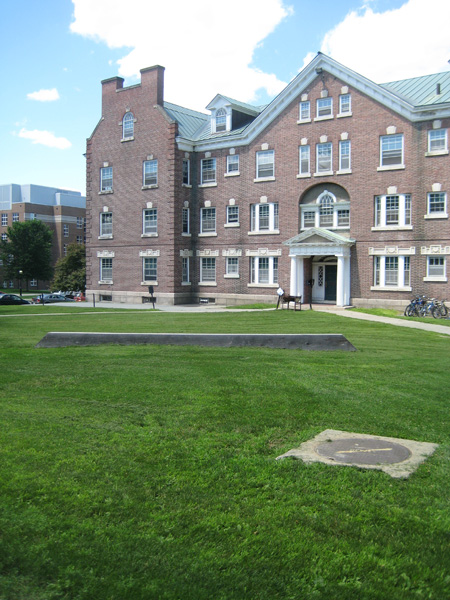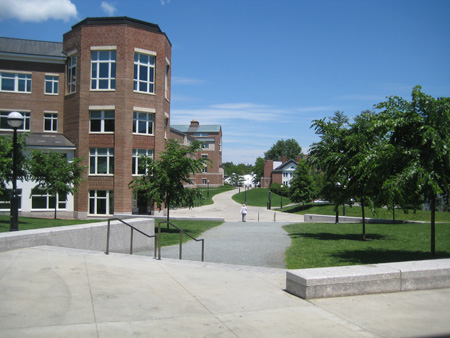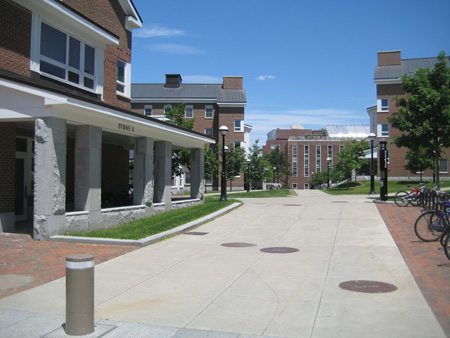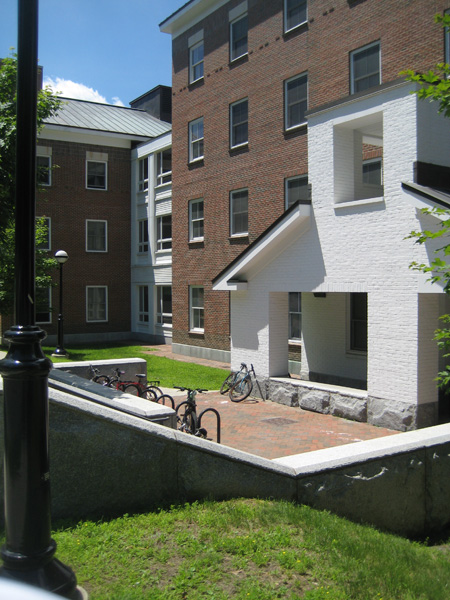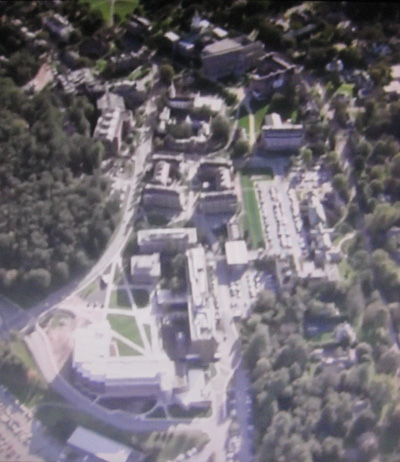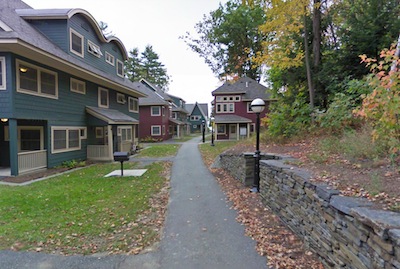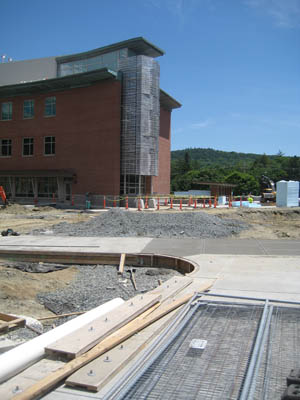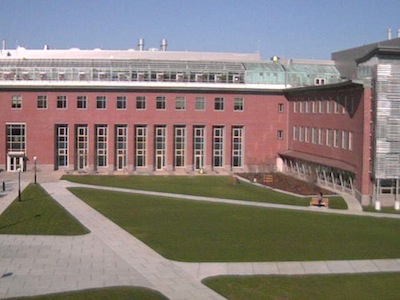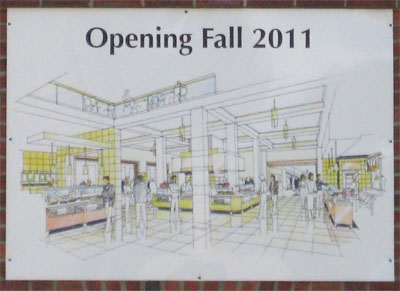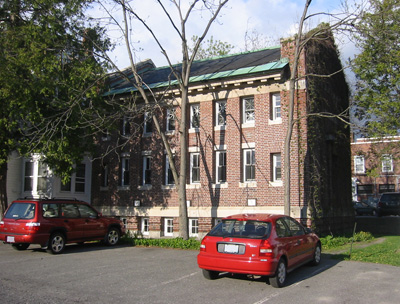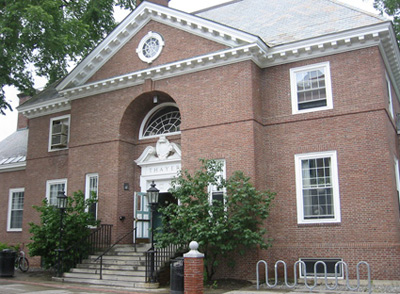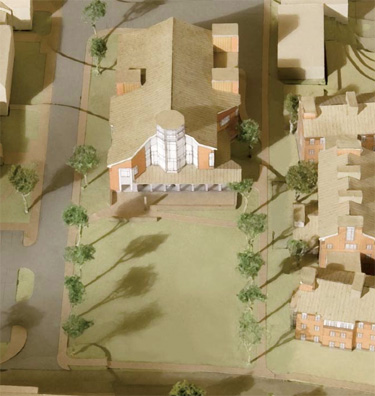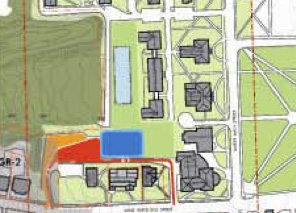A Valley News article reports President Kim’s suggestion that Dartmouth host a national institute of the science of the delivery of health care. One imagines that it would accompany or expand upon the existing Dartmouth Institute for Health Policy and Clinical Practice. That institute is scheduled to occupy the postponed future Koop Medical Science Complex at the south end of the Dartmouth-Hitchcock Medical Center (map).
If not located at the hospital, however, such an institute would make an excellent candidate for placement north of the medical school, even on the golf course. It would not require parking for patients; it would benefit from its proximity to downtown — walkable if not convenient enough for a student function — and yet it would be indisputably part of the college.
To allay the concerns expressed here last year, this building and any other buildings on the site should be made to follow the form of the town, not the campus. A grid of streets with sidewalks and buildings, rather than a network of curving driveways with lawns, would promote density while acknowledging that the college does not expect students to walk this far from the Green on a regular basis. The buildings would harmonize with the campus without pretending to be a part of it — much more South Block than McLaughlin Cluster.
The Institute for Security, Technology, and Society could move to the site, along with other administrative offices now at remote locations, such as the offices in the bank building on Main Street and the Development Office, which is in Centerra.
The perfect completion of such a plan would involve the Hanover Country Club House. The club has wanted a larger and more convenient clubhouse for several years. A new east-west connector street at the north end of this expansion project, crossing the south end of the golf course between Lyme Road to Rope Ferry Road, could provide an excellent site for such a building. The clubhouse would occupy the north side of this street, looking up the stretch of greensward; the south side of the street would be a densely-built wall representing the end of the urban development of Hanover. Compare the fascinating conditions of the Royal and Ancient Golf Club of St. Andrews.
In Hanover, the clubhouse would stand on the north side of the northern cross-street, whichever was built:
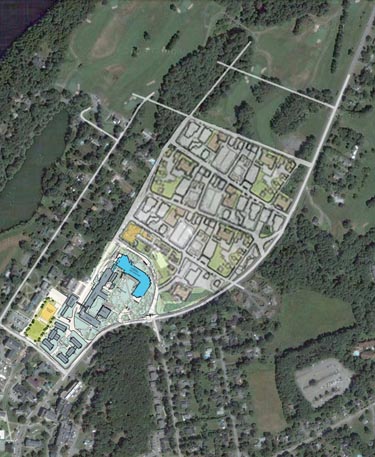
Example of town-form development
—–
[Update 05.03.2014: Broken link to DIHP&CP facts and figures replaced.]
[Update 09.25.2010: With all this talk of buildings, it never occurred to me that the Dartmouth Center for Health Care Delivery Science would be mostly on-line.]
[Update 02.06.2010: Map added.]
